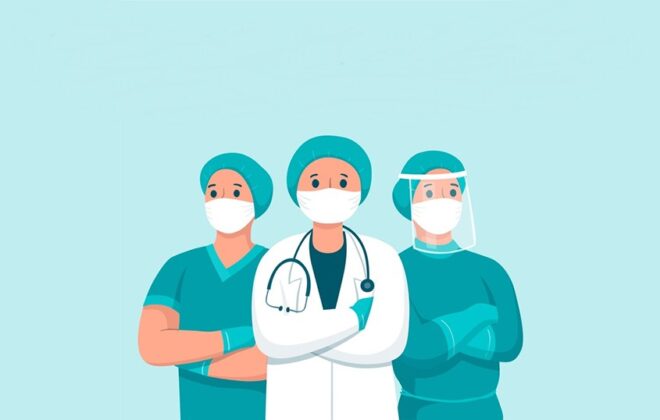New Approach for Life Sciences’ Future Workforce
A report published by the US Bureau of Labor Statistics in 2021 discloses the trends and employment projections for various occupations. The report indicates that social, physical, and life sciences employment will grow to 5% between 2019 and 2029, which is more rapid than the growth rate of all other occupations. It will, therefore, create 68,200 new jobs.
The report also shows that these occupations’ median annual wage ($69,760) is higher than others ($41,950). Such evolution can be best related to the pandemic-led increased demand for the emergence of radically new concepts, healthcare products, and services, including tech trends and advanced inpatient care.
Considering that digital transformation is quicker than at any other time due to Covid-19, future healthcare leaders should think differently concerning the factors of production, including talent.
Will the Healthcare Industry continue to evolve?
The life sciences industry has steadily accommodated the digital workforce, including the combination and application of AI, Automation, Machine-learning, etc. But often, companies get stuck at the pilot stage itself; due to their unrealistic expectations, the complexity of processes, technology-related challenges, and the skill gap. Furthermore, inadequate infrastructure stops them from deploying technology within the team and achieving the benefits of a completely integrated techno-enabled workforce.
One belief is that productivity will dive if people are not in the office. It has already been interrogated strictly since the pandemic mandated remote working. Another viewpoint is that technology and use cases should be prioritized, not talent or people. However, to be impactful, top leaders must defer and drop such self-limiting views to become successful.
As per McKinsey, in the coming 10 to 15 years, the demand for emotional, social, technical, and cognitive skills will likely increase by up to one-third. It indicates that skills like continuous learning, adaptability, and the ability to communicate will be critical for success, along with critical thinking, data engineering, and decision-making abilities.
Pointing to the future of work in the life science industries, one of the significant challenges would be bridging the wide skill gap. As technology has reformed the traditional relationship between the industry and its consumer, it holds up the fact that the human workforce needs to be engaged, agile, and non-threatened to gauge across the times.
Evaluating the Skill Gap in the Life Sciences Industry
To continue delivering success, innovation, and excellence, life science business-based companies shall make a skill shift, as indicated below:
1. Digital, Financial and Statistical Literacy
Basically, companies shall acknowledge the growing spectrum of digital capabilities of the workforce and enable their workforce to adapt and retain it fast. There are gaps in data science skills, including digital, technical, and expert computational and laboratory skills. Life Sciences organizations need to upskill their workforce, enhance their capacities to deal with technology’s more comprehensive databases, and promote their familiarisation through bespoke training modules.
2. Powerful Communication Skills
Another practical way to stay competitive and upfront is through one’s ability to communicate. Importantly, weightage to this skill must be paired with digitalization, remote working, and new medical technological advances. Engaging the audience with the proper expression and content is required for all fields. And, specifically during and post-pandemic, people want to stay more updated and informed about healthcare developments.
3. Excellent Leadership Skills
Technical skills and sector leadership (such as research, project management, analysis, etc.) are the most demanded skills in the Life Sciences industry. Companies shall fine-tune multiple management and leadership roles and address the skill shortages per the area. For instance, leadership role in virology or protein sciences.
One more push led by a pandemic is in the innovation and research field, followed by the ability to commercialize it. Companies shall increase space and time to align the skill pipeline with talent and break down the artificial obstacles between academic research and industry. It will help them arrive at ground-breaking research while also creating revenues.
Further, the skill updates shall reflect the technological and regulatory changes, in particular:
- Updates on manufacturing industry advances, accessibility, and utility online. (for instance, health equipment manufacturing, chemical processes, etc.)
- More expansive knowledge of disruptive technologies. (like Automation, AI, etc.)
- Specific knowledge of data science to ideate and reflect data-driven decision-making.
- Understanding of compliances, industry requirements, and their application.
To conclude, companies can bridge the talent gap by increasing cross-disciplinary working teams after developing a few ‘intangible’ skills and qualities.
Meanwhile, future leaders shall also plan and enable skill transfer from the older generation to the newer generation, which technology can aid. The sector shall boost itself as a desirable career option, deliver professional development, and clear the entry and promotion routes.
Well-planned strategies and their active implementation can undoubtedly ensure a committed and skilled Life Sciences workforce that is most suitable for the future.
Why work with Infojini – your Staffing Partner!
Our white paper aims to answer this – helping you gauge your need for a professional staffing agency like Infojini.
Have More Questions?
If you need more information about how Infojini can assist you, then email us at contactus@infojiniconsuling.com, or you can share your queries on our Contact Us page.
Related Posts
Subscribe For Updates
Categories
- Accountant
- AI
- Automation
- Awards and Recognitions
- Blue Collar Staffing
- Burnouts
- Campus Recruiting
- Cloud
- Co-Ops agreements
- Company Culture
- Compliance
- contingent workforce
- Contingent Workforce
- COVID-19
- Cyber Security Staffing
- Data Strategy
- Digital Transformation
- direct sourcing
- Distributed Workforce
- Diversity
- Diversity & Inclusion
- Economy
- Events & Conferences
- fleet industry
- Gig Economy
- Girls in Tech
- Global Talent Research and Staffing
- Government
- Healthcare
- Healthcare Staffing
- Hiring Process
- Hiring Trends
- Home Helathcare
- HR
- HR Practices
- HR Tech
- IT
- Labor Shortages
- Life Science
- Local Governments
- News
- Nursing
- Payroll Staffing
- Public Sectors
- Recruiting
- Remote Work
- Skill Gap
- SMB Hiring
- Snowflake
- Staffing
- Staffing Augmentation
- Staffing Challenges
- Talent ROI
- Tech Staffing
- Technology
- Tips & tricks
- Total Talent Management
- UI/UX Design
- Uncategorized
- Veteran Staffing
- Veterans Hiring
- Veterans Hiring
- Workforce Management
Recent Posts
- Automation in Recruiting: From Chatbots to Predictive Screening
- Gig Economy Expansion: The Impact on Talent Pools and Business Models
- Skills-Based Hiring: Why Credentials Alone Don’t Cut It in 2025
- Procurement 3.0: AI & Intelligent Automation in 2025
- Q3 Is Here: Is Your Contingent Workforce Strategy Falling Behind?
Newsletter
Archive
- September 2025
- August 2025
- June 2025
- April 2025
- March 2025
- December 2024
- November 2024
- October 2024
- September 2024
- August 2024
- July 2024
- June 2024
- May 2024
- April 2024
- March 2024
- February 2024
- January 2024
- December 2023
- November 2023
- October 2023
- September 2023
- August 2023
- July 2023
- June 2023
- May 2023
- April 2023
- March 2023
- February 2023
- December 2022
- November 2022
- October 2022
- September 2022
- August 2022
- July 2022
- June 2022
- November 2021
- October 2021
- September 2021
- August 2021
- July 2021
- June 2021
- May 2021
- April 2021
- March 2021
- February 2021
- January 2021
- December 2020
- November 2020
- October 2020
- September 2020
- August 2020
- July 2020
- June 2020
- May 2020
- April 2020
- March 2020
- February 2020
- January 2020
- December 2019
- November 2019
- October 2019
- September 2019
- August 2019
- July 2019
- June 2019
- May 2019
- January 2019
- December 2018
- November 2018
- October 2018
- September 2018
- August 2018
- July 2018
- June 2018
- May 2018
- April 2018
- March 2018
- February 2018
- January 2018
- December 2017
- November 2017
- October 2017
- September 2017
- August 2017
- July 2017
- June 2017
- May 2017
- November 2016
- October 2016





